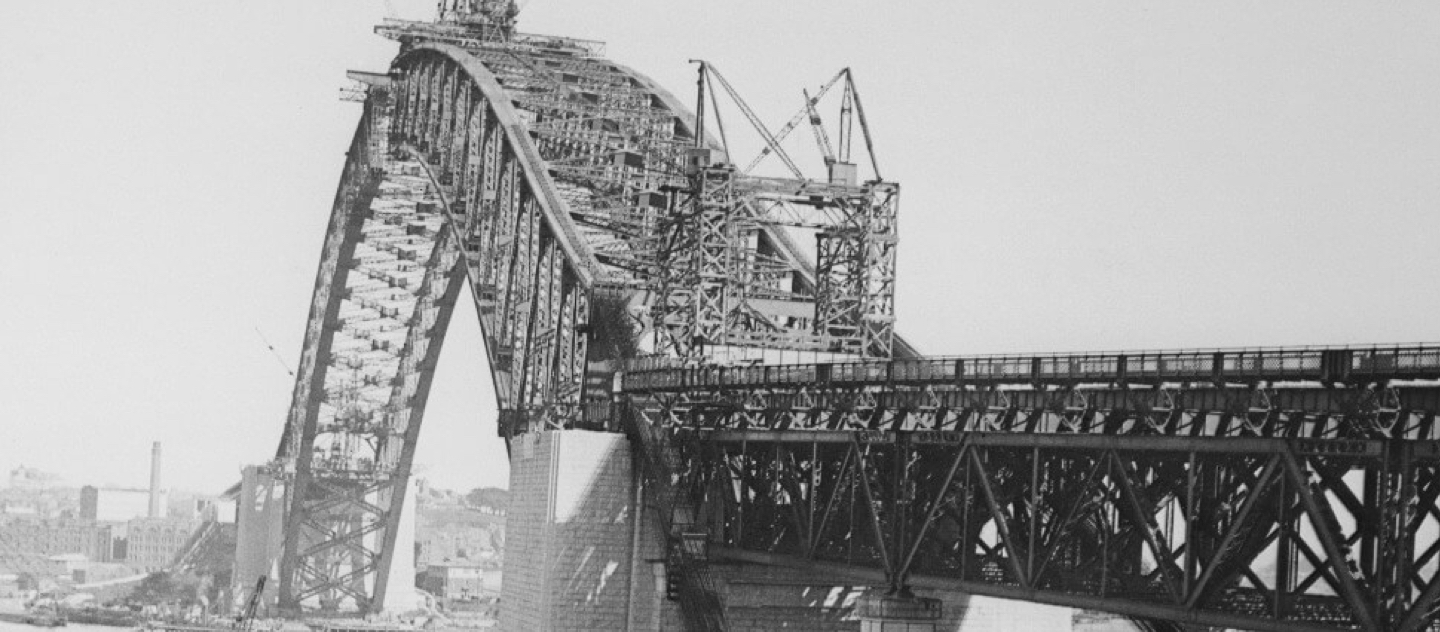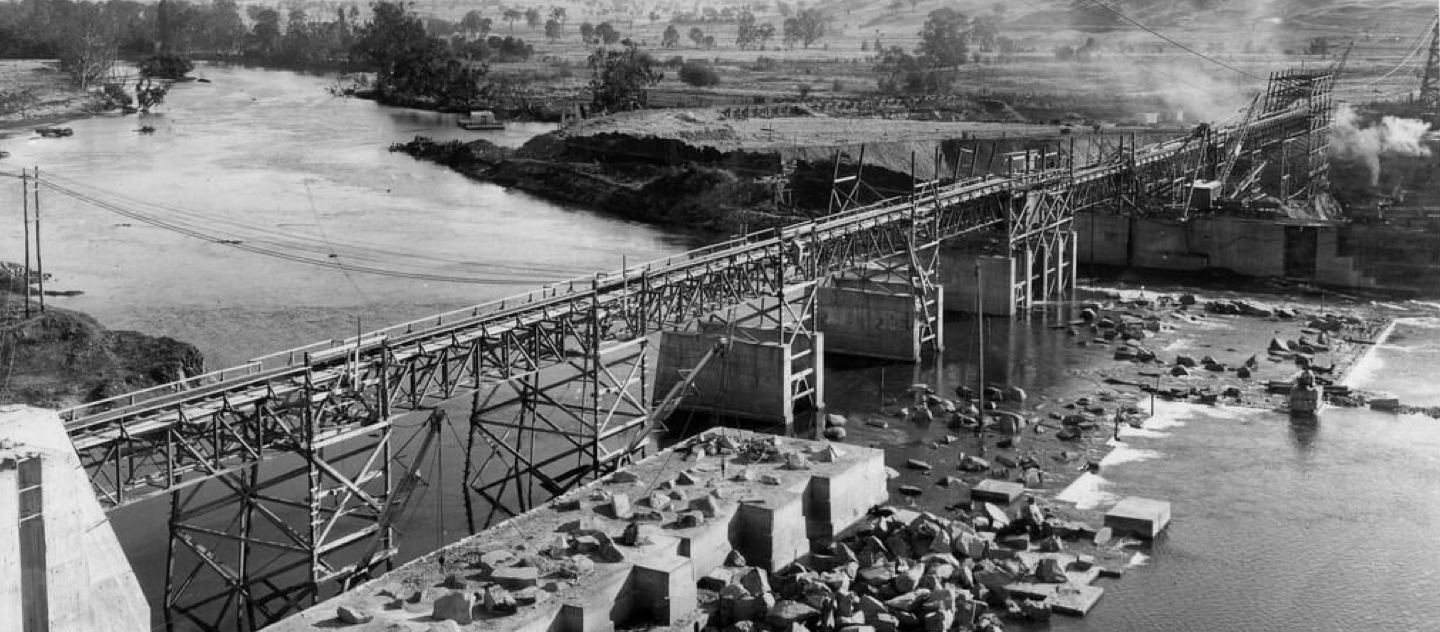Shaping NSW since 1856
Building on the past
We are proud of the rich heritage of NSW Public Works and its contribution to the development of the State of NSW to be celebrated and built upon.
The original Department of Lands and Public Works was set up in 1856 with a staff of 243, with Public Works forming its own department in 1859.
The State's roads, railways, tramways, telegraphs, electricity supply, lighthouses, fortifications, metropolitan water and sewerage, fortifications, local government infrastructure, port and dockyards, were all at some time in the care of NSW Public Works. With a solid foundation of more than 160 years of effective delivery and management of critical infrastructure projects for the State of NSW, NSW Public Works leverages this rich heritage as the advisor and enabler of the best possible infrastructure solutions for the future.

Sydney Harbour Bridge
Designed and constructed under the supervision of Public Works Department Chief Engineer John Bradfield, Sydney Harbour Bridge continues to stand in the spectacular harbour setting as an icon of Sydney and is the key transport link between the two shores.

Sydney Opera House
Following the resignation of original architect Utzon, a firm of Hall Todd and Littlemore was formed to complete the Sydney Opera House. NSW Public Works managed the project’s three construction stages. It commenced in 1959 and opened in October 1973 and since then Public Works has provided consulting services to the Sydney Opera House Trust.

Water Supply Dams
NSW Public Works has built over 100 major and minor water supply dams throughout NSW. Cataract, Avon, Cordeaux and Nepean Dams, built in the early 1900’s, are still a major part of Sydney’s water supply today. Dams such as Hume Weir, Burrinjuck, Oberon, Chichester and Adaminaby Dam continue to play a significant role in providing secure water supplies to Regional NSW.

Wastewater Treatment
NSW Public Works’ contribution to the development of low cost sewage treatment technology for local communities ranks as one of the most sustained of any public authority in the world. The construction of reticulated water supply and sewage systems in Sydney and major country towns between 1880 and 1930 produced dramatic improvements in public health.
